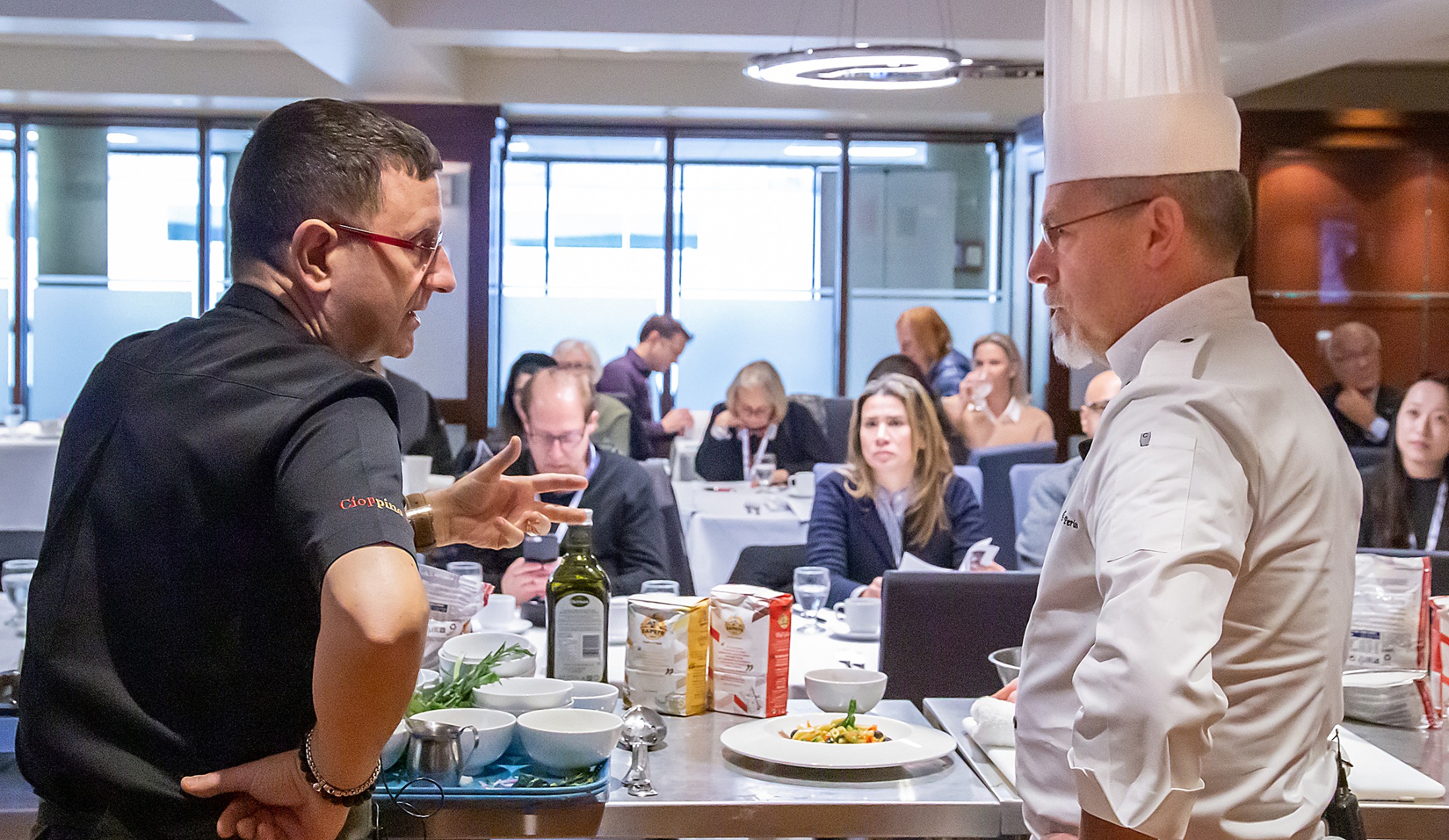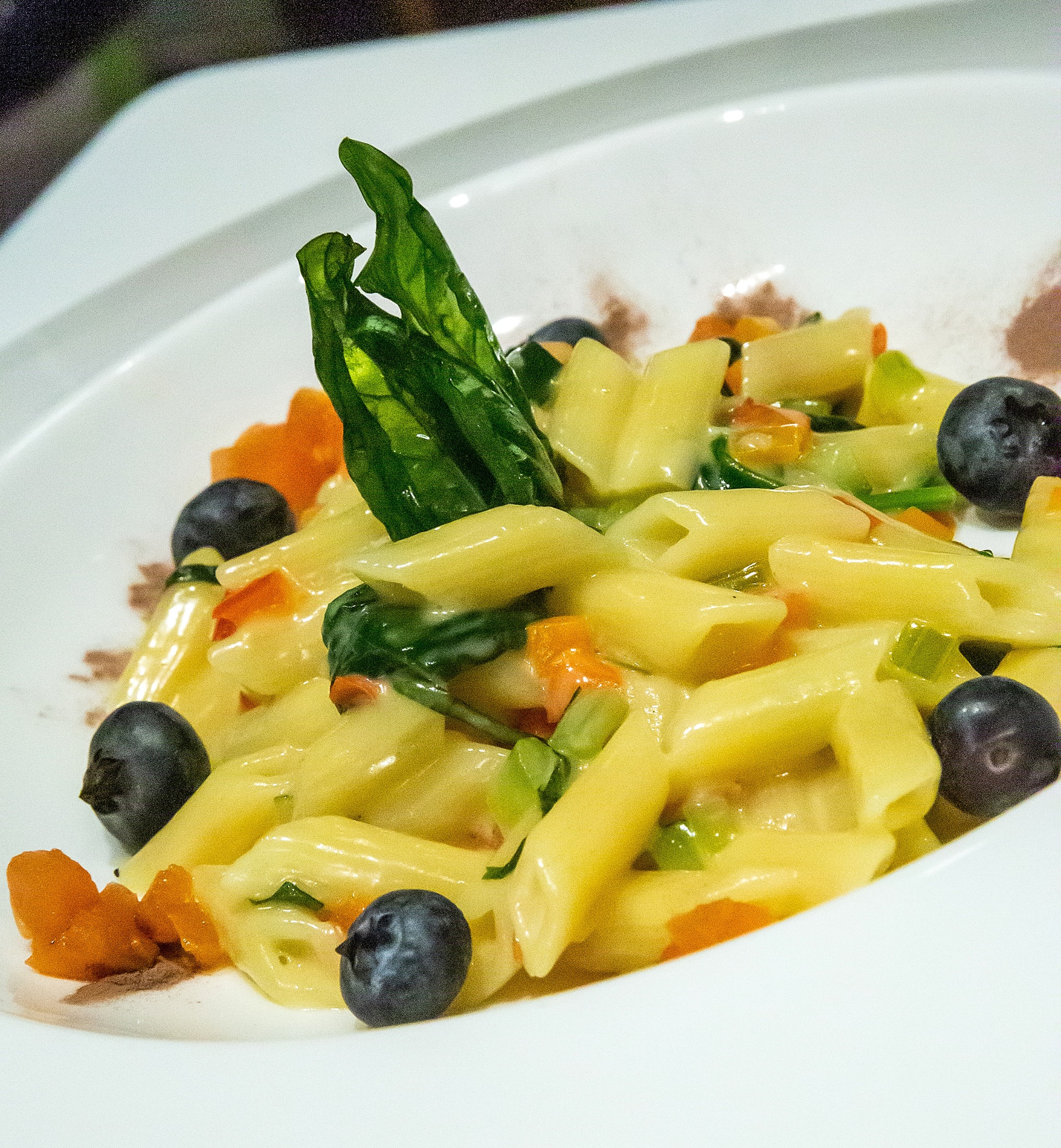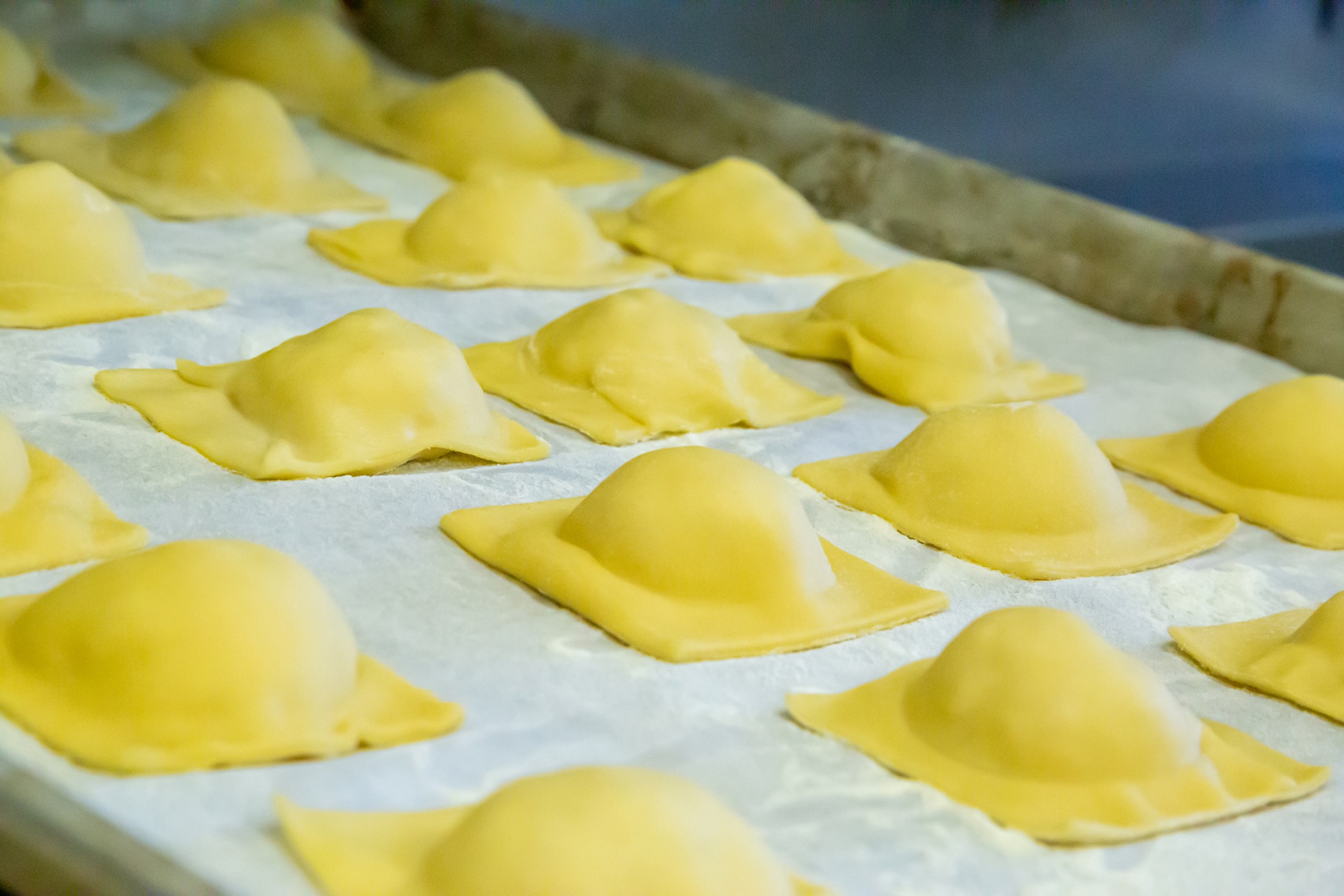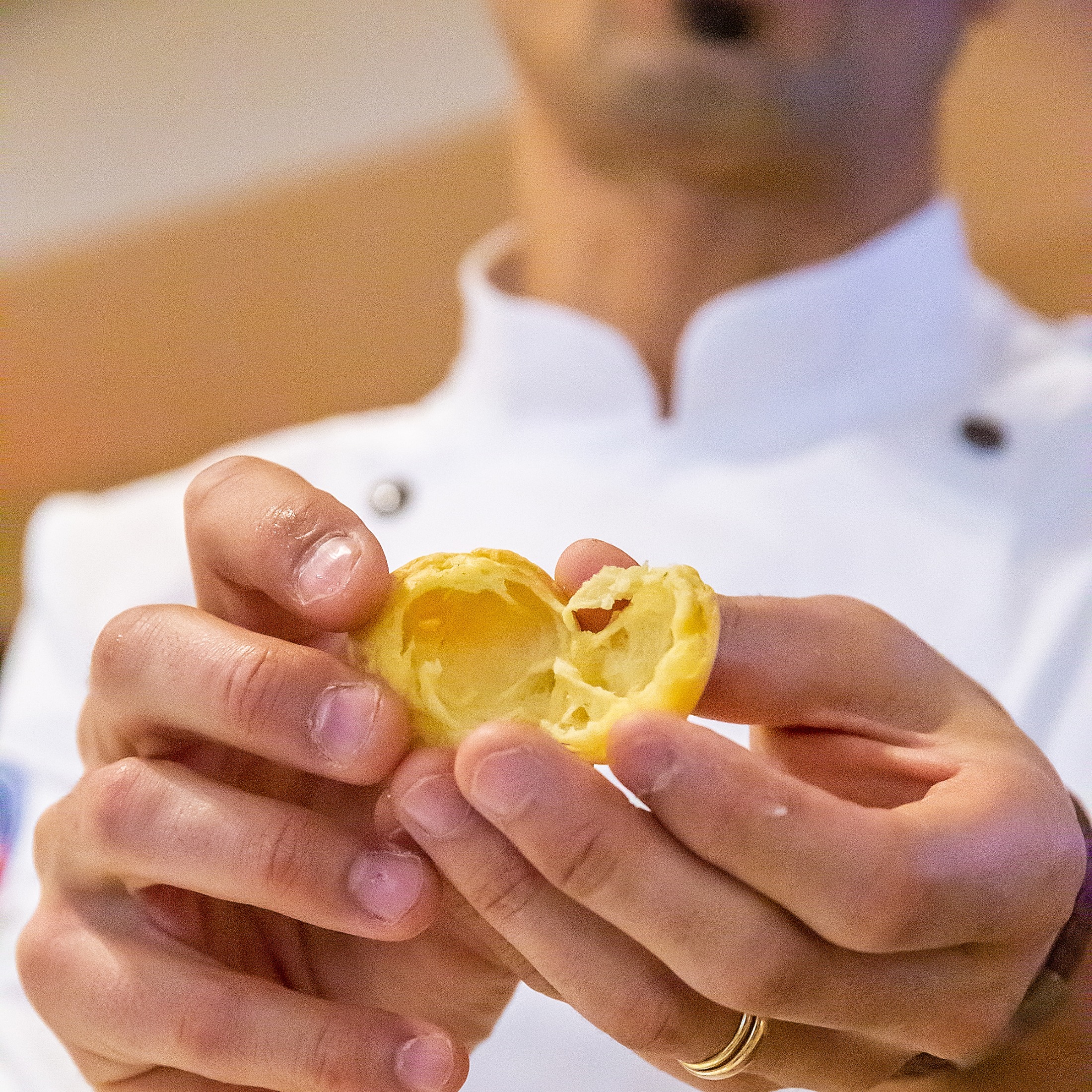We all know how to cook pasta, right? So how do you explain why the plate of linguine served to you at your favourite Italian restaurant or—yes please—at that unpretentious trattoria in Italy, tastes so much better it might as well be a different food group altogether?
The World Week of Italian Cuisine (which ends Nov. 24) sets out to do just that, with more than a thousand events highlighting the products and cooking traditions of Italy taking place across the globe. In Vancouver, one such event was a masterclass presented by members of the Association of Professional Italian Chefs (APCI): captain of the Italian national APCI team, chef Luca Malacrida; Italian team coach, chef Giorgio Perin; and Vancouver’s own chef Pino Posteraro on hand to translate, take questions, and offer his own thoughts on how best to prepare certain dishes.

Chefs Luca Malacrida and Giorgio Perin.
We can’t guarantee that these tips will transform your Sunday supper to the heights these chefs attain, but they may help add a touch more authentic flair to your plate.
1. Fresh pasta does not always mean the best pasta
Italian manufacturers of dried pasta know what they are doing, chef Pino insists. Look for Italian-made, bronze-die pasta—the rougher texture will help your sauce adhere better—and boil it for 2.5 to 3 minutes less than the manufacturer recommends. The trick is to finish cooking the pasta (but keep it al dente) in the sauce. Chef Pino cooks his pasta in water with 15g of sea salt added per litre.

Chef Pino Posteraro translates for chef Giorgio Perin.
2. Cook your pasta as if it were risotto
Use a short cut pasta, and cook it by gradually adding stock or bisque to the pan, and letting the pasta absorb the liquid, suggests chef Giorgio. As the starch releases from the pasta into the stock, the sauce will become creamy, without the need for added dairy. It will take 15 to 20 minutes to cook, and you can add vegetables and herbs as you go. You won’t need as much stock as you would to make a risotto, but make sure it is low sodium, as the salt intensifies as it absorbs into the pasta.

3. Add blueberries
Believe me, there were more than a few eyebrows raised at the sight of fresh blueberries being added to chef Giorgio’s plates, but they brought a welcome pop of acidity (as well as a textural element) to his creamy vegetable pasta dish. Any berries will work, just make sure they aren’t too sour.
4. Make your béchamel with cold milk
This one blew my mind. I’ve been dutifully heating milk to make the classic besciamella since my teens. No longer. According to the Italian chefs, if you keep the liquid cold, it will incorporate more quickly, and you don’t run the risk of floury lumps. There is a lasagne in my future waiting for this theory to be tested.

5. Keep it simple
This is the key, of course. Italian food is all about the best ingredients, treated with respect, and allowed to shine. Chef Luca confits sablefish in a very delicate olive oil before using it to fill ravioli, adding nothing but seasoning to the fish. He uses the same olive oil in place of butter in his pâte à choux, making the resulting beignets as light as air.

Chef Luca Malacrida’s pâte à choux.
All three chefs agree: the extra dollar or two spent on imported Italian products—particularly dried pasta—will pay dividends on the dish when you cook.
Buon appetito!
Read more from Food and Drink.









